RFC Training School At Aboukir
During WWI, the RFC recognised the need for a flying training station in Egypt, and so a base was set up at Aboukir. These photographs, very kindly supplied by my old colleague Robin, were taken by his grandfather, Fred Twinn.
Robin takes up the story...
RFC Training School - Aboukir, Egypt
During WWI, the British Royal Flying Corps saw an urgent requirement, primarily for pilots, and set up an extensive training system in Egypt. Although the output was mainly pilots, No3 SoMA ( School of Military Aviation ), which had |
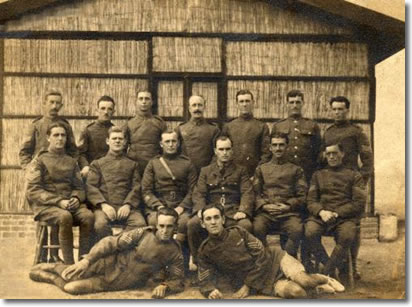 |
opened in November, 1916 at |
|
| Aboukir , Egypt , initiated a school of gunnery. Later, as Britain again started shipping more cadets to Aboukir, the school started turning out observers. |
|
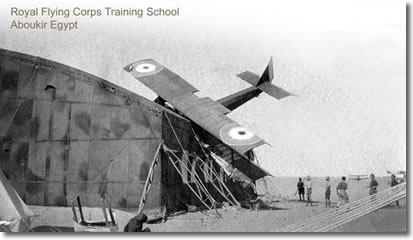 |
A Training MishapAn aircraft (looks like a D.H.9) ends up nose deep in the roof of a hangar. This is unlikely to have been a crash from height - the aircraft is too intact for that. It is more likely that a trainee pilot made a heavy landing, and by a mixture of throttle mismanagement and a lack of control managed to bounce his way towards the hangar. |
A Fatal AccidentA worse accident. This aircraft (possibly a B.E.2) crashed into a hut and killed a man who was sleeping inside. |
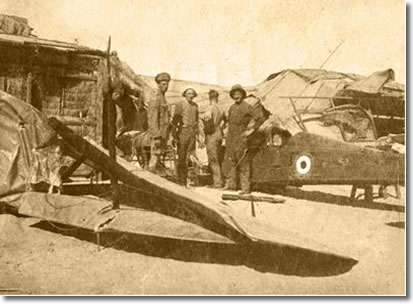 |
 |
A Noseover on LandingAnother accident - but this time one where the pilot undoubtedly walked away intact. This aircraft is almost certainly a B.E.2c two-seat fighter which crashed in May 1917. (B.E. stood for Bleriot Experimental, which was a general term for a tractor, or front-engine machine.) |
WWI aviation historian Mick Davis has very kindly supplied the history of B.E.2c number 4155: 17 Sqn Heliopolis by 17.4.1916 (tested new).14 Sqn. 1 Sqn AFC/67 (Australian) Sqn Heliopolis / Mustagig / Kilo 143 / Rafah dd ex 17 Sqn 10.7.1916. X AP Kantara ex 67 Sqn 8.5.1917. 20th Wing Aboukir by 8.5.1917. 58 TS Suez by 15.5.1917. If you have an interest in WWI aviation then you can do no better than to explore the website of the Society of First World War Aero Historians at Cross and Cockade International. To do this, click on Links. |
|
A Bent AVRO 504KAnother very heavy landing, this time an AVRO 504K. The AVRO 504K entered service in 1913 and was outclassed as a fighter soon after WWI started. Relegated to training duties; at which it excelled, it was in use until the 1930s. Before it ended its service career, the rotary engine was replaced with a radial, and it was re-designated the AVRO 504N. Both variants of the AVRO 504K were easy to fly and spin |
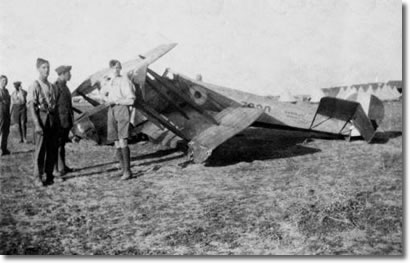 |
| recovery was particularly | |
simple. It was replaced by the DH Tiger Moth. Fred Twinn is in the left foreground, facing the camera. |
|
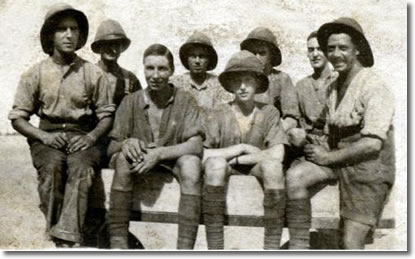 |
The Usual SuspectsA group from the school takes some time out. |
A Visit to GizaA group of airmen on a visit to Giza. Fred Twinn, hatless, is in front of the camera lens for a change. |
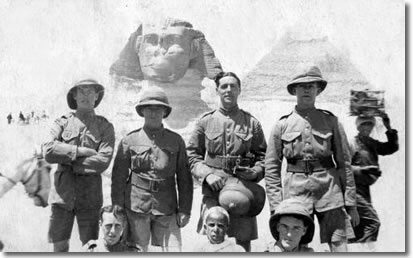 |
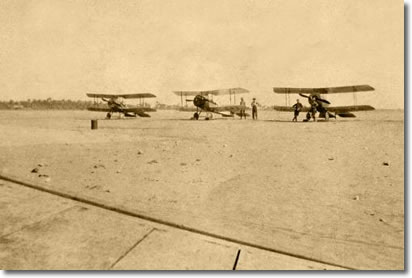 |
Aircraft near JerusalemThe caption to this was "Off to bomb Turks", which would probably date this picture to December 1917 or after; following General Allenby's capture of Jerusalem .The aircraft look like Bristol Scouts. Most Scouts were powered by the 80 HP Le Rhone engine, which gave a top speed of 100 mph. |
A Seaplane Carrier is snapped at seaA seaplane carrier is snapped on the high seas. In the foreground, there appears to be a floatplane with its wings folded, but no engine. Behind it, there appears to be the fuselage of another machine. A bit more research will be required to identify these types. |
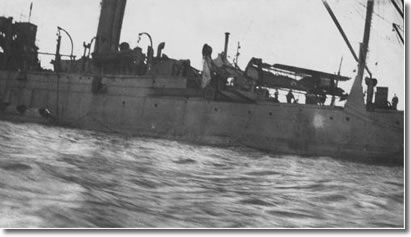 |
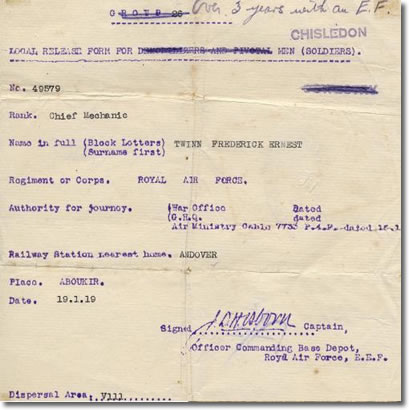 |
Back to BlightyFred Twinn's release from the Egyptian Expeditionary Force. |
© Copyright 2007 CairdPublications.com | Site Map | Contact Us |

